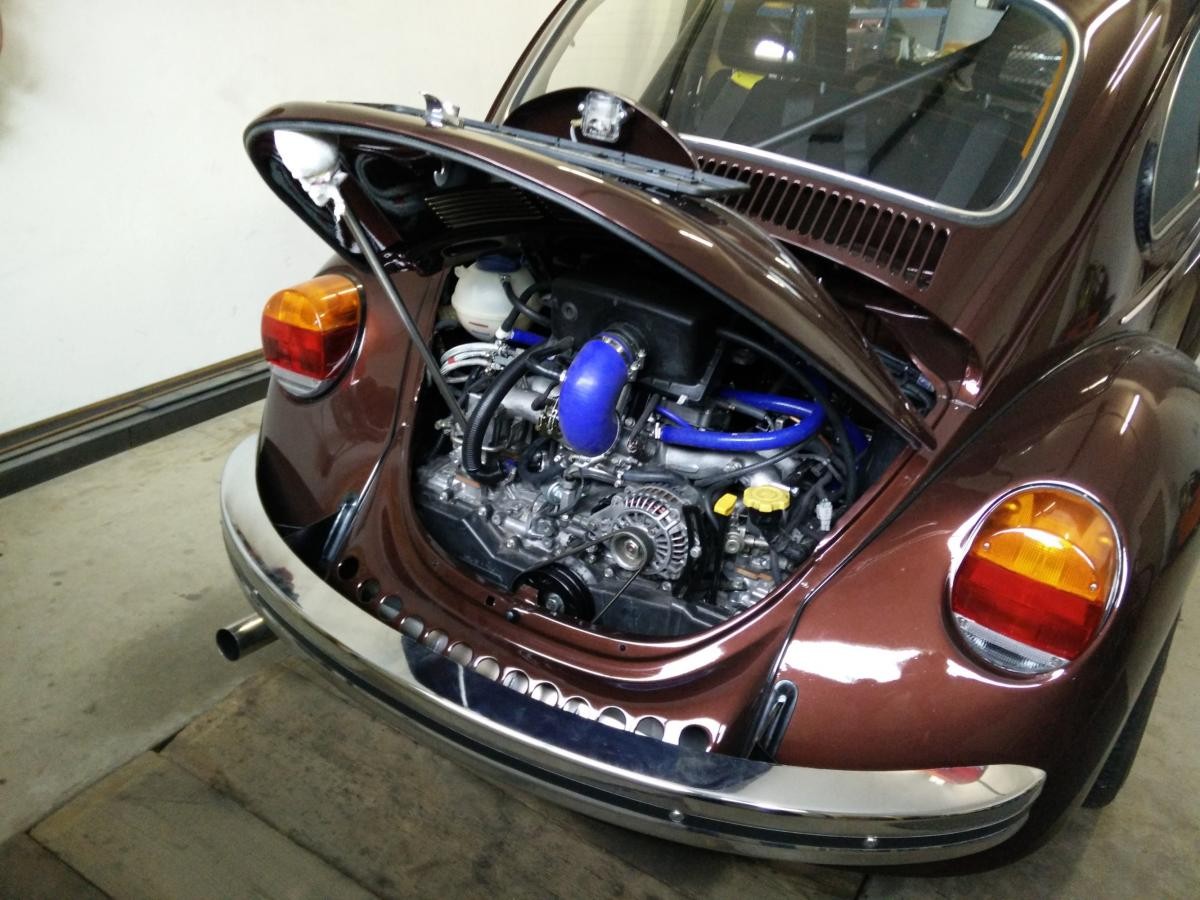OBD2 scanners are essential tools for diagnosing car problems, but understanding their nuances, especially concerning automatic vs. manual transmissions, can be crucial. This article delves into a specific issue encountered during a Subaru EJ25 engine swap into a Volkswagen Beetle, highlighting the challenges of OBD2 diagnostics and the differences in automatic and manual transmission systems as they relate to OBD2 codes.
A 2000 Subaru Legacy EJ25 SOHC engine, originally paired with an automatic transmission, was swapped into a 1973 VW Beetle. Despite using the stock ECU and wiring harness, a persistent “Engine Torque Control” error code (code 38) appeared. This code typically indicates an issue with the communication between the Engine Control Unit (ECU) and the Transmission Control Unit (TCU), a component present in automatic transmission vehicles. Data from the OBD2 scanner confirmed the ECU was anticipating an automatic transmission.
Replacing the ECU with one supposedly from a manual transmission vehicle yielded the same error code. This raised two possibilities: either the replacement ECU was also from an automatic transmission vehicle, or the transmission type is determined elsewhere in the system, not solely by the ECU.
Research revealed that earlier Subaru engines (1996-1999) used an “AT/MT identification pin” on the wiring harness to signal the transmission type to the ECU. However, locating this pin, or even confirming its existence, for the 2000 Legacy EJ25 proved challenging. Numerous online resources, including dedicated Subaru forums and wiring diagrams, were consulted but provided no definitive answer.
 Subaru EJ25 Engine
Subaru EJ25 Engine
While the automatic transmission relies on the TCU to manage shifting and torque converter lockup, a manual transmission does not have this intermediary. Instead, the driver directly controls gear changes and clutch engagement. This fundamental difference affects how the ECU manages engine torque and interacts with the transmission system. In an automatic, the ECU communicates with the TCU to adjust engine output based on factors like vehicle speed, throttle position, and gear selection. In a manual, the ECU primarily relies on driver inputs and engine sensors.
Therefore, the error code 38 in a manual swap scenario likely stems from the ECU expecting feedback from a non-existent TCU. Resolving this issue may involve modifying the wiring harness, reprogramming the ECU, or potentially using a standalone engine management system that doesn’t require TCU interaction. The challenge lies in deciphering the specific communication protocols of the 2000 Legacy EJ25 ECU and determining the necessary adjustments for manual transmission compatibility.
This case study emphasizes the importance of understanding the differences between automatic and manual transmission systems when using OBD2 diagnostic tools. While OBD2 scanners provide valuable data, interpreting those readings requires knowledge of the specific vehicle and its transmission configuration. Further research and experimentation are needed to pinpoint the exact solution for this particular engine swap issue.

